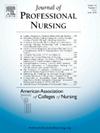Teaching Nursing Students the Ethical and Legal Consequences of Medical Errors: Insights from the RaDonda Vaught Case Using the Jigsaw Technique
IF 2.8
3区 医学
Q1 NURSING
引用次数: 0
Abstract
Purpose
This article examines teaching the consequences of harm and error to multisite prelicensure baccalaureate, second-degree baccalaureate, and graduate nursing students utilizing the RaDonda Vaught Trial as an exemplar. The Jigsaw Technique (JT) was the chosen learning strategy to empower students with knowledge and understanding through the lens of terms acquired throughout existing concept-based nursing curriculum.
Results
Nursing students evaluated the approach to this activity using both quantitative and qualitative feedback. A total of 188 nursing students completed the survey, including undergraduate and graduate nursing students. Qualitative data obtained from students through open comments revealed common perceptions about such focal areas as advocacy, license protection, system failures, medication errors, and legal documentation. Quantitative outcomes related to the utilization of the JT approach were overwhelmingly positive.
Conclusion
Results indicate that our approach, combining the RaDonda Vaught case with the JT, was an effective strategy for teaching the consequences of medical errors in nursing practice.
向护理专业学生讲授医疗事故的伦理和法律后果:使用拼图技术从 RaDonda Vaught 案中获得启示
目的 本文以 RaDonda Vaught 审判为例,探讨了向多地点学士学位预认证、学士学位第二学位和护理研究生教授伤害和错误的后果。结果护理专业学生通过定量和定性反馈对这一活动的方法进行了评估。共有 188 名护理专业学生完成了调查,其中包括护理专业的本科生和研究生。通过公开评论从学生那里获得的定性数据显示了他们对宣传、执照保护、系统故障、用药错误和法律文件等重点领域的共同看法。结论结果表明,我们将 RaDonda Vaught 案例与 JT 相结合的方法是在护理实践中讲授医疗差错后果的有效策略。
本文章由计算机程序翻译,如有差异,请以英文原文为准。
求助全文
约1分钟内获得全文
求助全文
来源期刊
CiteScore
4.80
自引率
8.00%
发文量
153
审稿时长
52 days
期刊介绍:
The Journal will accept articles that focus on baccalaureate and higher degree nursing education, educational research, policy related to education, and education and practice partnerships. Reports of original work, research, reviews, insightful descriptions, and policy papers focusing on baccalaureate and graduate nursing education will be published.

 求助内容:
求助内容: 应助结果提醒方式:
应助结果提醒方式:


